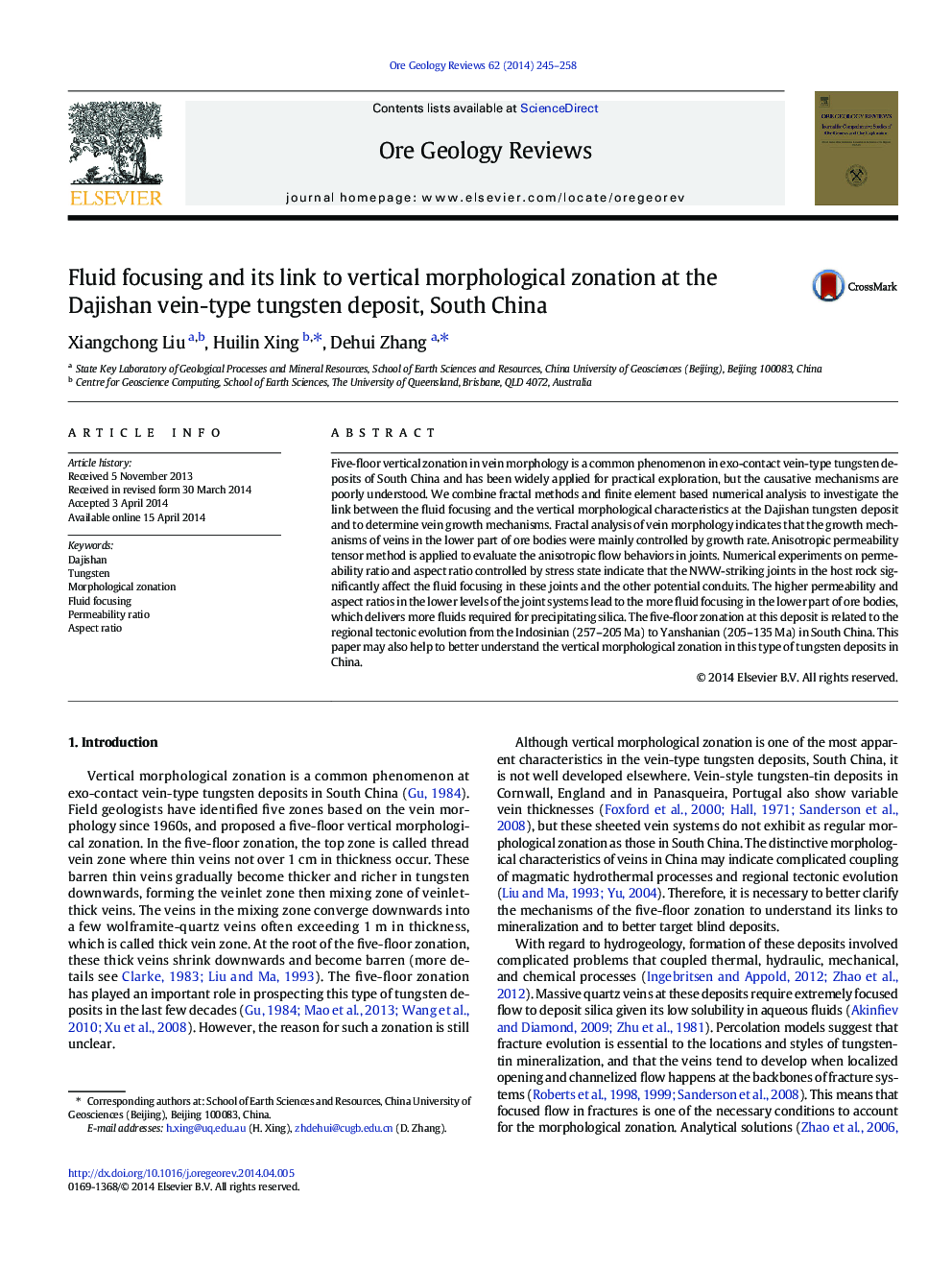| Article ID | Journal | Published Year | Pages | File Type |
|---|---|---|---|---|
| 4697393 | Ore Geology Reviews | 2014 | 14 Pages |
•Many vein-type tungsten deposits in China have vertical morphological zonations.•We build a link between fluid focusing and the morphological zonation.•Permeability ratio and aspect ratio influence the fluid focusing in joints.•Fractal analysis on vein morphology helps the use of the zonation in exploration.
Five-floor vertical zonation in vein morphology is a common phenomenon in exo-contact vein-type tungsten deposits of South China and has been widely applied for practical exploration, but the causative mechanisms are poorly understood. We combine fractal methods and finite element based numerical analysis to investigate the link between the fluid focusing and the vertical morphological characteristics at the Dajishan tungsten deposit and to determine vein growth mechanisms. Fractal analysis of vein morphology indicates that the growth mechanisms of veins in the lower part of ore bodies were mainly controlled by growth rate. Anisotropic permeability tensor method is applied to evaluate the anisotropic flow behaviors in joints. Numerical experiments on permeability ratio and aspect ratio controlled by stress state indicate that the NWW-striking joints in the host rock significantly affect the fluid focusing in these joints and the other potential conduits. The higher permeability and aspect ratios in the lower levels of the joint systems lead to the more fluid focusing in the lower part of ore bodies, which delivers more fluids required for precipitating silica. The five-floor zonation at this deposit is related to the regional tectonic evolution from the Indosinian (257–205 Ma) to Yanshanian (205–135 Ma) in South China. This paper may also help to better understand the vertical morphological zonation in this type of tungsten deposits in China.
Graphical abstractFractal analysis of vein morphology at the Dajishan tungsten deposit, South China indicates that the lower part of the vein systems has a relative high amount of thick veins, and that the growth mechanisms of veins in the lower part of ore bodies were mainly controlled by growth rate. The existing oriented joints above granite became the main pathways for mineralized fluids. The higher permeability and aspect ratios in the lower levels of the joint systems lead to the more fluid focusing in the lower part of ore bodies, which delivers more fluids required for precipitating silica.Figure optionsDownload full-size imageDownload as PowerPoint slide
